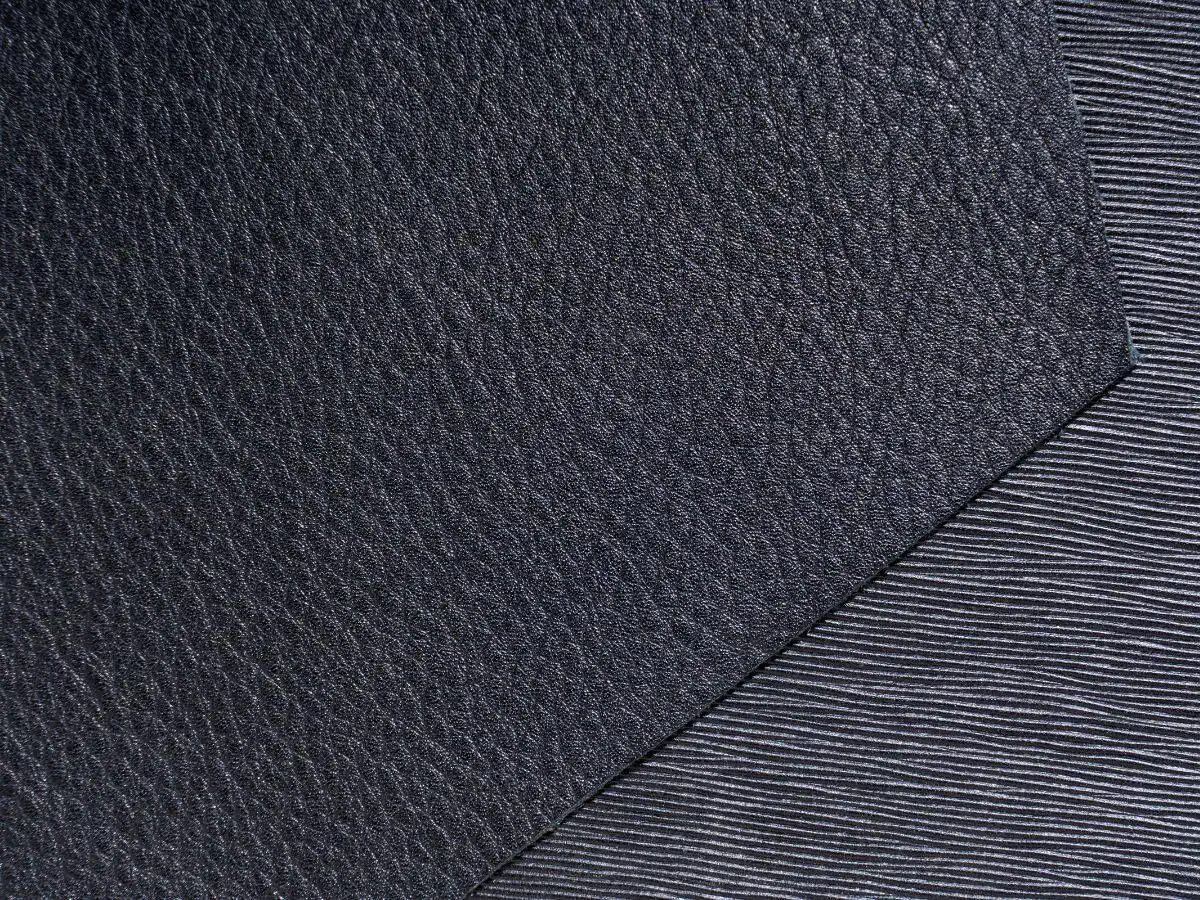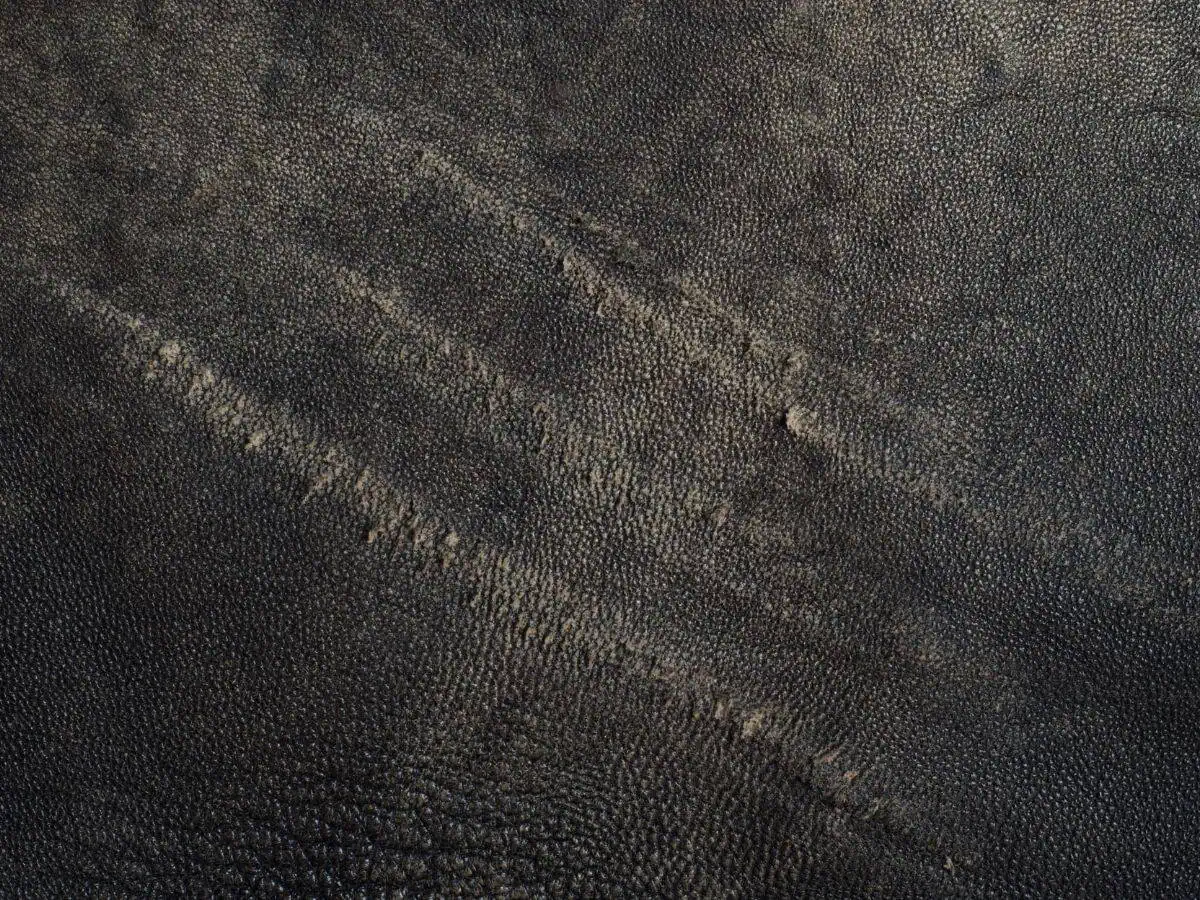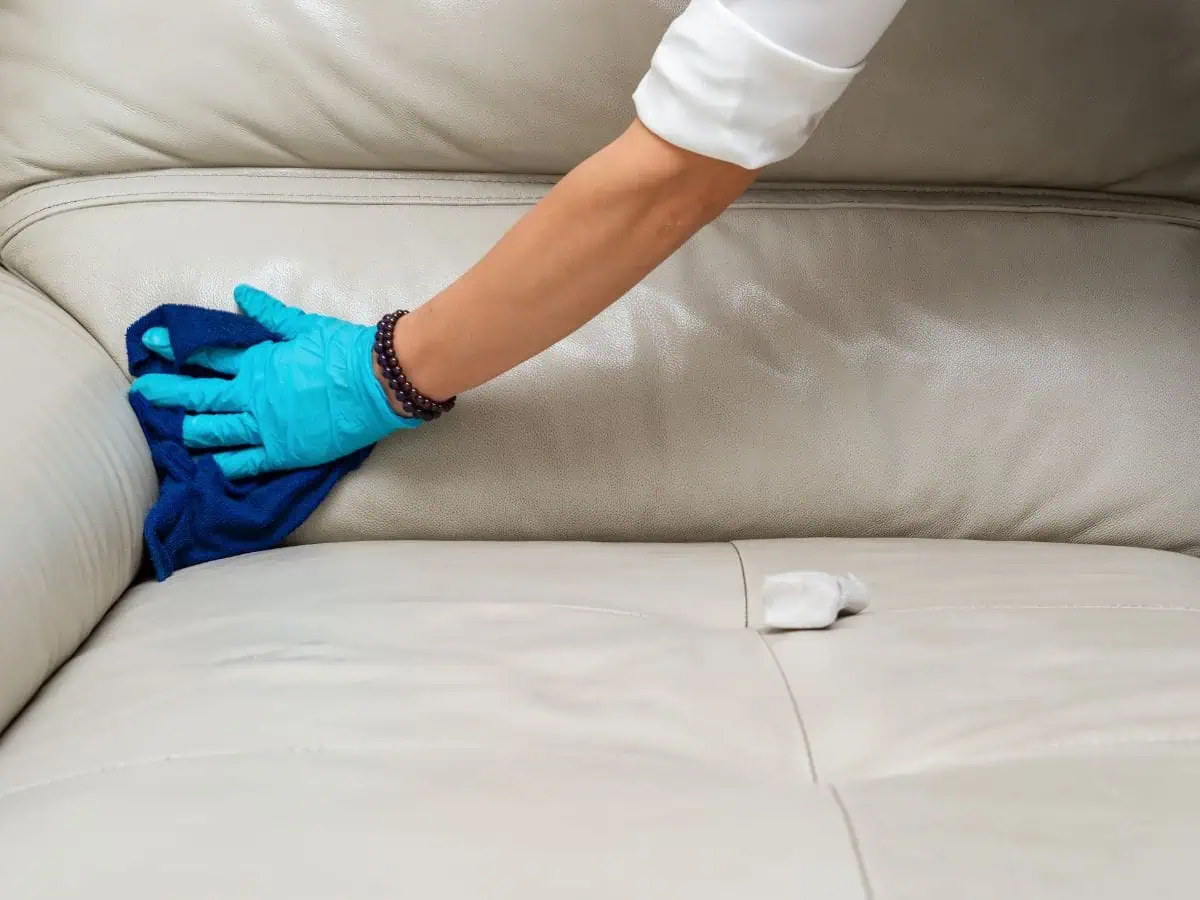A leather sofa is more than just a piece of furniture-it’s an investment in your home’s comfort and style. However, even with the most careful use, scratches can appear on your leather sofa over time, diminishing its elegant appearance. Whether it’s from pet claws, keys accidentally dragged across the surface, deeper scratches, or everyday wear and tear, these marks can be distressing to discover on your prized possession. The good news is that many scratches can be addressed effectively, either through DIY methods or professional restoration services. For light scratches, applying leather oil in a circular motion can minimize their appearance, followed by a conditioner to maintain the leather’s integrity. This guide will walk you through understanding your leather type, identifying common causes of scratches, and exploring various repair options to restore your leather sofa to its former glory.
Understanding Leather Types
Different Leather Varieties and Their Properties
Before attempting any repair, it’s crucial to identify what type of leather your sofa is made from, as different leathers require different treatment approaches:
Full-grain leather is the highest quality and most durable leather available. It retains the natural grain and imperfections of the hide, developing a beautiful patina over time. While it’s more resistant to scratches than other types, when scratches do occur, they can be more noticeable due to the natural surface.
Top-grain leather has had its surface sanded and refinished to remove imperfections. It’s still durable but slightly less so than full-grain. The protective coating applied to top-grain leather makes it somewhat more resistant to staining but can make scratch repair more challenging.
Corrected-grain leather has been sanded to remove imperfections and embossed with an artificial grain pattern. It often has a thicker protective coating, which affects how scratches appear and how they should be treated.
Bonded leather is made from leather scraps bonded together with adhesives. It’s the least durable type and most prone to damage. Scratches on bonded leather often require different repair techniques than genuine leather.
Aniline leather is dyed with soluble dyes without applying a surface coating, resulting in a soft, natural feel but making it more vulnerable to scratches and stains.
Semi-aniline leather has a light protective coating that offers some protection while maintaining a natural appearance.
Pigmented leather has a polymer surface coating containing pigments, making it more durable and resistant to scratches but with a less natural feel.

Why Knowing Your Leather Type Matters
The effectiveness of any repair method depends significantly on correctly identifying your leather type. Using the wrong technique could potentially worsen the damage or alter the appearance of your sofa. If you’re unsure about your leather type, check the manufacturer’s information or consult with a professional who can accurately identify your leather type and recommend appropriate treatment options.
Common Causes of Scratches
Everyday Culprits Behind Leather Damage
Understanding what causes scratches can help you prevent future damage to your leather sofa:
Pets are perhaps the most common source of leather scratches. Cats sharpening their claws and dogs jumping onto furniture with their nails can quickly damage leather surfaces. Even smaller pets like rabbits or ferrets can cause surprising amounts of damage with their claws.
Sharp objects such as keys, belt buckles, jean rivets, and jewelry can create scratches when they come into contact with leather surfaces. Even seemingly harmless items like pens in back pockets can leave marks when someone sits down.
Furniture movement during cleaning or rearranging can result in scratches if the sofa is dragged across the floor or bumps into other furniture pieces.
Children’s toys with hard or sharp edges can easily scratch leather when played with on or near the sofa.
Daily wear and tear gradually affects leather over time, especially in high-traffic areas like seat cushions and armrests.
Prevention Strategies
Implementing these preventive measures can significantly reduce the risk of scratches:
- Place throws or blankets over areas where pets frequently sit
- Create designated pet areas away from leather furniture
- Establish clear rules about keeping sharp objects away from the sofa
- Use furniture pads when moving pieces
- Regularly trim pets’ nails
- Consider using protective covers when children are playing nearby
- Position your leather furniture away from high-traffic pathways
Taking these simple precautions can extend the life of your leather sofa and maintain its appearance for years to come.

Home Remedies for Minor Scratches
For light scratches, try these simple solutions before purchasing specialized products:
- Leather conditioner method: Clean the area with a damp cloth, then apply a small amount of leather conditioner with a soft cloth using circular motions. Allow it to absorb, then buff gently. Using a leather cleaner first can help prepare the surrounding leather for better absorption.
- Olive oil technique: For very minor scratches on certain leather types, a tiny amount of olive oil applied with a cotton swab can help. However, use this sparingly as too much oil can darken leather or create stains. This method works well for removing scratches, but ensure to apply a thin layer and let the oil dry.
- Vinegar solution: Mix equal parts white vinegar and water, apply sparingly to the scratch with a cotton swab, and allow to dry naturally. Before application, make sure to remove any dirt from the scratched area to ensure effective treatment and maintain the leather’s colour.
- Wax and polish method: Apply a thin layer of wax polish to the scratched surface, then buff it out to restore the leather’s appearance. This can help smooth out the scratches and blend them with the surrounding leather.
- Lanolin cream for deeper scratches: For deeper scratches, apply lanolin cream with a clean cloth to the affected area. Multiple applications may be necessary for the best results. This method can help smooth and repair the scratched section.
- Natural oil technique: Apply a small amount of natural oil, such as olive oil or saddle oil, to the scratch. Allow it to sit for an hour before wiping off any excess oil. This method can be effective for treating light scratches and maintaining the leather’s integrity.
- Lanolin oil for leather items: Use lanolin oil to treat scratches on various leather items. Apply it with a cloth to the scratched area and let it absorb. This can help smooth out the scratches and restore the leather’s appearance.
- Saddle oil for protection: Apply saddle oil to the scratched area to help protect and restore the leather. Use this sparingly, as too much oil can darken the leather or create stains. Baby oil can also be used, but ensure to remove excess oil to avoid a greasy finish.
- High quality leather care: For high quality leather, addressing cat scratches promptly can prevent further damage. Use a leather conditioner to treat the scratches and maintain the leather’s luxurious appearance. For dog scratches, assess the severity and use appropriate methods to repair the damage.
- Petroleum jelly for minor scratches: Apply a small amount of petroleum jelly to the scratched area with a clean cloth. This can help the leather absorb the jelly and potentially restore its appearance.
Using DIY Leather Repair Kits
For more noticeable scratches, commercial leather repair kits can be effective:
- What to look for in a leather repair kit: Quality kits should include cleaner, colorant, applicator tools, and clear instructions specific to your leather type. A good repair kit will also be versatile enough to handle various types of damage, including scuffs and color loss.
- Step-by-step application process:
- Clean the damaged area thoroughly
- Allow to dry completely
- Apply the colorant in thin layers as directed
- Allow proper drying time between coats
- Apply any finishing products included in the kit
- Allow the repair to cure fully before using the furniture
For more noticeable scratches, commercial leather repair kits can be effective: Manufacturers often offer a discounted repair kit as part of their customer service. These kits may include heavy filler, which has a putty-like consistency, to fill deeper scratches and restore evenness before coloring.
- Common mistakes to avoid:
- Skipping the cleaning step
- Applying too much colorant at once
- Not matching the color correctly
- Rushing the drying process
- Using products not suitable for your specific leather type
Even with careful attention to these steps, the risks of DIY recolouring for blotchy, cracked or uneven leather remain significant, particularly when dealing with color matching and application techniques. These common errors often lead to the hidden dangers of DIY restoration that may not become apparent until weeks after the repair attempt.
When DIY Might Not Be Enough
While DIY methods can work well for minor to moderate scratches, be cautious about attempting repairs on:
- Expensive or antique leather furniture
- Deep scratches that expose the underlying material
- Large areas of damage
- Specialty leathers like aniline or nubuck
- Areas where previous repair attempts have failed
- Scratched surface that needs to be properly repaired
In these cases, professional restoration services like those offered by LeatherXpert can provide better, longer-lasting results.

When to Call a Professional
Benefits of Professional Leather Repair
While DIY solutions can address minor scratches, professional leather restoration offers significant advantages, especially when it comes to leather scratch repair. Utilizing a leather repair kit can make a significant difference in achieving professional results at home.
Expertise and specialized equipment: Professional technicians like those at LeatherXpert have extensive training and access to commercial-grade tools and products not available to consumers. With over 30 years of experience, they can accurately assess damage and apply the most effective techniques. They often use a repair kit to address each scratched section effectively.
Custom color matching: Professionals can precisely match your leather’s color, texture, and finish-something particularly challenging with DIY kits, especially for unique or aged leather colors.
Comprehensive assessment: Experts can identify underlying issues that might not be apparent to untrained eyes, preventing further damage.
Long-lasting results: Professional repairs typically last significantly longer than DIY fixes, maintaining their appearance through regular use. A scratched surface can be repaired to look as good as new, ensuring the longevity of your leather furniture.
Maintenance Tips for Leather Sofas
Regular Cleaning Routine
Establishing a consistent cleaning regimen is essential for maintaining leather furniture:
Weekly maintenance:
- Dust with a soft, dry cloth to remove surface particles
- Vacuum crevices and seams using a soft brush attachment
- Wipe down with a slightly damp cloth if necessary
- Apply a leather conditioner to protect against future damage and preserve the leather’s appearance
Monthly deep cleaning:
- Use a leather-specific cleaner appropriate for your leather type
- Apply with a soft cloth using gentle circular motions
- Avoid excessive moisture which can damage leather
- Pay special attention to high-use areas like armrests and headrests
Conditioning for Longevity
Regular conditioning prevents leather from drying out and becoming vulnerable to scratches:
- Apply a quality leather conditioner every 3-6 months to protect the surface
- Choose products specifically formulated for your leather type
- Test any new product on an inconspicuous area first
- Apply conditioner sparingly with a soft cloth
- Allow proper absorption time before using the furniture

Protecting Against Environmental Factors
Environmental conditions significantly impact leather durability:
- Position leather furniture away from direct sunlight to prevent fading and drying
- Maintain consistent humidity levels (40-50%) to prevent leather from drying out
- Keep leather furniture at least 30cm away from heat sources like radiators to protect it from damage
- Consider using a humidifier in dry winter months
- Use protective covers during extended periods of non-use
Conclusion
Scratches on leather sofas don’t have to mean the end of your furniture’s beauty or functionality. With proper identification of your leather type and the severity of the damage, you can choose the most appropriate repair method-whether that’s a simple DIY fix for minor scratches or professional restoration for more significant damage.
Regular maintenance plays a crucial role in preventing future scratches and extending the life of your leather furniture. By implementing a consistent leather cleaning and conditioning routine, protecting against environmental factors, and addressing spills promptly, you can maintain your leather sofa’s elegant appearance for years to come.
For Newcastle upon Tyne residents and those in surrounding areas like Whitley Bay, Northumberland, Gateshead, Chester-le-Street, Durham, and Sunderland, LeatherXpert offers specialized leather restoration services using eco-friendly, non-toxic methods. With over three decades of experience, their team can address even the most challenging leather damage, often at a fraction of the cost of replacement.
Whether you choose to tackle minor scratches yourself or enlist professional help for more significant damage, taking action promptly will help preserve your leather furniture’s beauty, comfort, and value for years to come.
For professional leather restoration services, contact LeatherXpert at 0800 180 4009 or email sales@leatherxpert.co.uk to schedule an assessment of your leather furniture needs.
